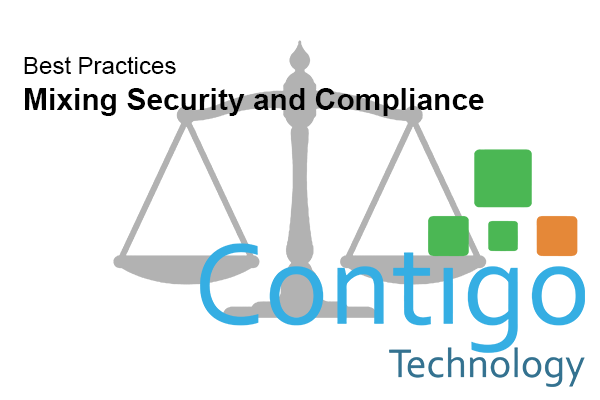
Best Practices – Mixing Security and Compliance
How Data Compliance and Security Differ
Compliance and security are two essential factors when running a business. Both are equally important for the seamless operation of your business. While compliance helps your business stay within the bounds of industry or government regulations, security protects the integrity of your business and sensitive data.
It is worth noting that although security may be a prime component of compliance, compliance doesn’t equal security. this is often because compliance doesn’t consider the growing threat landscape and associated risks. However, what it considers may be a set of pre-defined policies, procedures, controls, etc.
If an audit concludes that these pre-defined elements are adequate and your business adheres to them, everything is taken into account “okay” from a compliance standpoint. However, you continue to might not be up to scratch from a security standpoint, which only goes to point out that you simply are often compliant but still come short on security.
In other words, because compliance requirements take a predictable path and alter slowly, the compliance landscape lags behind the rapidly changing, unpredictable security landscape.
Now, let’s determine how your business can benefit by combining security and compliance.
Get Covered With Security and Compliance Solutions
There are multiple security loopholes that you simply must proactively fix to remain out of danger. you’ll roll in the hay by deploying suitable security solutions. a couple of common security loopholes and related solutions are:
1. Advanced Persistent Threats (APTs)
APTs across three attack pillars — endpoints, network and therefore the cloud — are capable of paralyzing hybrid/remote/on-site work environments. Experts estimate the worldwide APT protection market to be worth on the brink of $6 billion in 2021 and $12 billion in 2025.1 This statistic highlights the difficulty caused by APTs. the simplest thanks to tackling it’s by deploying an answer that can:
• Offer 24/7 monitoring and threat hunting
• Efficiently block malicious actors that evade firewalls and antivirus systems
2. Insider threats skyrocketing at alarming rates
Over the last two years, insider incidents have increased by 47%.2 What makes the scenario even worse is that the incontrovertible fact that insider threats are tough to detect. That’s why it’s advisable to possess a complicated internal threat detection solution that mixes machine learning and intelligent tagging to spot anomalous activity, suspicious changes and threats caused by misconfiguration.
3. Lack of clarity about the network
Keeping track of all the computers, mobile phones, printers and servers on your business’ network are challenging, especially in today’s increasingly remote-first approach to figure. But without knowing the devices on your network, it’s impossible to understand your IT network’s health. To combat this problem, you would like an automatic assessment and documentation solution capable of identifying risks to all or any assets, including those not physically connected to the network.
4. Untrained employees and credentials getting sold on the dark web:
• When your employees are untrained and unaware of risky actions, it could lead to severe security setbacks. for instance, an employee carelessly clicking on a phishing link could lead to a full-blown ransomware attack on your business.
• Another major security issue that you simply may encounter is when your credentials get sold on the dark web. Experts estimate that 60% of the knowledge available on the dark web could negatively affect most businesses’ security and financials.3
• Remember that inadequate data access protocols aren’t just a security issue but also can land you in predicament with regulators.
Tackle all the above issues by deploying industry-best solutions for security awareness training, dark web monitoring, and identity/access management.
Just like security loopholes, you want to also fix compliance loopholes the instant you notice them. Non-compliance can even cause regulators to levy penalties as high as 4% of your company turnover. Beyond loss, you’ll even have to face stakeholder dissatisfaction, drop by market share, etc. To avoid such trouble, use an answer that automates compliance processes and generates insightful reports that document compliance.
Convergence of Security and Compliance
Most companies have minimum protection in order, like an antivirus on workstations/active firewalls. However, you want to confirm that your business’ security posture can withstand the growing cyberthreat landscape. With some effort, you’ll incorporate your security solutions into your compliance strategy also.
By carefully bringing both security and compliance together systematically, you’ll reduce risks significantly. To build up your organization’s security posture, you’ll implement strong authentication, data protection, access monitoring, network-to-edge defenses, etc. By routinely validating the effectiveness of those solutions, you’ll ensure your organization is taking the required measures to avoid non-compliance and security breaches.
Ready to take steps? We can help!
Register for a consultation to discover how we will assist you in combining security and compliance to stop data compliance issues.
Sources:
- Statista
- 2020-Global-Cost-of-Insider-Threats-Ponemon-Report
- CSO Online
- GDPR Associates
